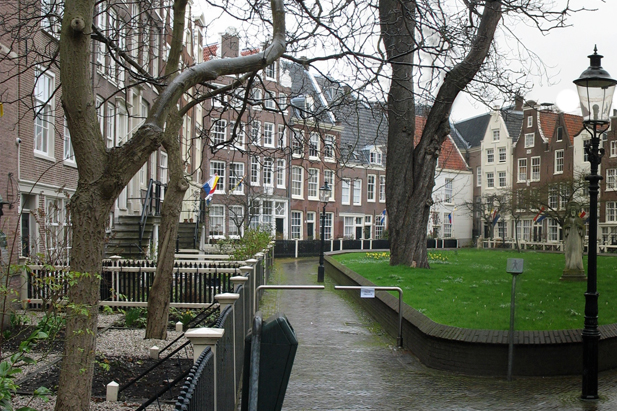Near the Spui at the end of the Kalverstraat is a little turning on the west leading into the Begijnenhof (Beguines' Court), around which lie the quaint 17th-century dwellings of the Begijnen nuns.
The Begijnenhof is one of the oldest inner courts in Amsterdam. The last Beguine nun was "Sister Antonia", she died at the age of 84 in the year 1971.
It is unclear when exactly the Begijnenhofwas founded. In 1346, the beguines still lived in a house. A courtyard was only first mentioned in documents in 1389.
After the Alteration (Protestant overtake) of 1578, the Begijnenhof was the only Roman Catholic institution to be allowed to remain in existence. This was because the houses were the beguines' private property. However, they lost their chapel when the merchants of Amsterdam invited some Scottish weavers over to settle in their town.
They must have a church of their own, they said, or they would not come. So, just as the traders of the city of Veere in Zeeland had handed over part of their beautiful Collegiate Church to their Scottish settlers, the merchants of Amsterdam found the charming little Begijnen Chapel, and gave it up to the Scotts.
To this day visitors finding their way to this quiet enclosure shaded by pruned chestnut-trees, and entering the tiny white chapel, will find the service conducted in the English tongue.
One of the houses on the Begijnenhof is famous as one of the two oldest wooden medieval houses "Houten Huys" still existing in the centre of Amsterdam.















